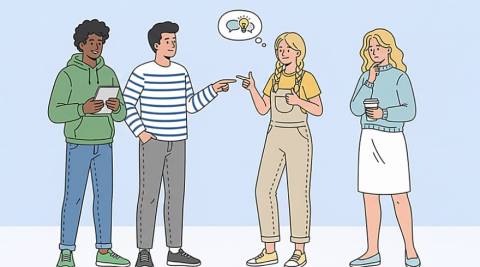Uncover Your Color Communication Style and What Colors Say About You

Why Color Speaks Before Words: Foundations and Benefits
Before a headline is read or a voiceover plays, color sends a fast, intuitive signal. Human vision prioritizes contrast, temperature, and saturation to parse what matters, which is why a carefully chosen palette can increase clarity, memorability, and motivation in an instant. This subtle channel influences how people feel about products, how teams align on brand storytelling, and how communities interpret signals across culture and context. When organizations design with chromatic intent, they compress complexity into a glance, improving wayfinding, decision-making, and trust. In practical terms, colors communication acts like a visual tone of voice, shaping anticipation, priming mood, and pointing attention toward the next action on screens, packaging, and spaces. Thoughtful hue selection can calm or energize, while value and contrast guide hierarchy without shouting.
Across teams, design systems flourish when vocabulary and palette work together to reduce ambiguity, prevent mixed messages, and maintain coherence at scale. When teams map color and communication together, they align intent with perception, shortening feedback cycles and lifting engagement across touchpoints.
- Amplify message clarity without adding cognitive load.
- Boost recognition through consistent palette cues over time.
- Improve accessibility with contrast-aware hierarchy and states.
- Create emotional continuity across channels and contexts.
- Support brand storytelling with culturally considerate choices.
The Psychology and Science Behind Chromatic Signals
Color affects the nervous system quickly, with pre-attentive features like hue, luminance, and saturation shaping how we notice change and prioritize content. Warm hues often signal urgency or proximity, while cool hues can convey distance or stability, yet meaning is not universal; associations blend biology, culture, and context. This is why a medical interface might lean on calm neutrals and cool accents, whereas a sports campaign can thrive on high-contrast primaries and vigorous gradients.
At the perceptual layer, color communication leverages contrast sensitivity and opponent channels, enabling viewers to parse alerts, states, and categories before reading a single word, especially under time pressure.
| Hue Family | Common Associations | Practical Uses |
|---|---|---|
| Red | Urgency, passion, risk | Warnings, sales badges, critical states |
| Orange | Enthusiasm, approachability | Onboarding cues, secondary calls-to-action |
| Yellow | Alertness, optimism | Highlights, cautionary notes, hints |
| Green | Safety, growth, confirmation | Success states, environmental themes |
| Blue | Trust, calm, reliability | Navigation, finance, healthcare dashboards |
| Purple | Imagination, premium, mystery | Creative brands, luxury accents |
| Neutral/Gray | Balance, structure, restraint | Text, backgrounds, disabled states |
Context shapes interpretation because lighting, material, device gamut, and cultural norms mediate how people read a palette. In comparative research, communication colours are often analyzed through arousal and valence, indicating that saturation and contrast can be just as influential as hue in shaping emotional tone for different audiences.
- Leverage contrast for scannability and focus management.
- Pair hues with typography and spacing to reinforce hierarchy.
- Prototype on multiple devices to account for gamut variance.
- Test with diverse audiences to avoid narrow cultural bias.
Frameworks and Styles That Turn Palettes Into Playbooks
To operationalize intent, teams transform palettes into systems that define roles for hues and states for interactions. A practical framework assigns primary, secondary, semantic, and neutral roles, then specifies contrast ratios, motion rules, and state transitions. This turns aesthetics into repeatable behavior so different contributors designers, writers, and engineers can make consistent, fast decisions without creative drift. The result is a living language where components inherit function and feeling from a carefully governed core.
Many organizations map temperament and decision-making to palettes for clearer collaboration, and communication style colors help cross-functional groups anticipate how messages might be perceived during reviews, stand-ups, and stakeholder briefings.
As systems mature, teams craft tokens and themes for platforms, define semantic roles for status, and document do’s and don’ts with rationale. For brand voice alignment, color communication style can be described in terms like “confident, warm, and precise,” which guides choices for gradients, shadows, and microinteractions in a way that’s easy to train and scale.
- Role-based palettes for semantic clarity in interfaces.
- Design tokens to synchronize code and design tools.
- Governance rituals to prevent palette bloat over time.
- Guided examples that show appropriate and inappropriate usage.
Real-World Applications Across Brand, Product, and Service
From retail packaging to health portals, color sets the tone for trust, momentum, and clarity. In ecommerce, clear semantic hues distinguish urgency from reassurance so shoppers feel in control. In workplaces, palette discipline reduces notification fatigue while preserving visibility for important alerts. For education, visual scaffolding with supportive hues helps learners pace complex material and maintain motivation. And in physical environments, signage aided by chromatic coding streamlines navigation under stress, such as airports or hospitals.
When teams use temperament-based frameworks, true colors communication styles offer a shorthand for anticipating client reactions, making critiques more objective and preventing needless rework during high-stakes presentations.
Across campaigns and interfaces, analytics often reveal that small chromatic refinements can unlock outsized gains in conversion, comprehension, and retention. In omnichannel ecosystems, communication colors unify the customer journey so that social posts, landing pages, emails, and support portals feel coherent without looking identical, which builds memory structures that pay dividends over months and years.
- Marketing: Increase call-to-action salience while retaining brand equity.
- Product: Clarify states, errors, and confirmations to reduce friction.
- Support: Calm tense moments with steady, low-arousal hues and spacing.
- Analytics: A/B test palette variants tied to message intent and timing.
Implementation, Testing, and Measurement for Continuous Improvement
A durable program begins with a palette audit, stakeholder interviews, and an inventory of touchpoints. From there, teams define semantic roles, accessibility thresholds, and measurement goals linked to outcomes like task success, time on task, error rates, or conversion. Prototyping in context dark mode, sunlight, large displays prevents surprises and ensures cues remain legible and trustworthy. To sustain momentum, adopt a ritual of quarterly reviews, snapshot metrics, and cross-functional critiques that tie chromatic decisions to business outcomes.
To align people and language, a brief workshop using a communication style color test can prompt discussion about expectations, preferred tone, and risk tolerance, helping teams translate abstract brand values into tangible chromatic choices.
Quantitative validation should complement qualitative insights, and a structured communication color test enables controlled comparisons of palette variants so you can isolate the effects of contrast, luminosity, and hue on behavior without confounding variables.
- Define success metrics up front to avoid retrofitting narratives.
- Test in realistic contexts with representative audiences.
- Document findings in your design system with clear rationale.
- Iterate conservatively to protect recognition while improving clarity.
FAQ: Common Questions About the Practice
How do cultural differences influence meaning?
Associations vary across regions and communities, and context often outweighs stereotypes. Teams should validate assumptions with local research, pilot campaigns, and in-market listening to confirm whether a palette feels respectful, relevant, and legible under real conditions.
What is the fastest way to get started?
Begin with a small, role-based palette that covers primary actions, secondary actions, semantic states, and neutrals, then test in real scenarios before scaling. As confidence grows, expand accents and motion rules while maintaining contrast and consistency across surfaces.
How can we educate stakeholders who prefer personal taste?
Turn taste into testable hypotheses by tying proposed hues to measurable goals, accessibility criteria, and audience feedback. For early buy-in, a lightweight color communication quiz can make abstract ideas tangible, creating a shared vocabulary for feedback during reviews.
How do we preserve brand personality without hurting usability?
Reserve expressive hues for headlines, imagery, and illustrations while using proven semantic colors for interactive states and critical information. This balance keeps the experience distinct yet dependable, even when content density or urgency increases.
What if different teams interpret the palette differently?
Codify intent through examples, anti-patterns, and performance metrics so choices are grounded in evidence rather than opinion. For complex organizations, a short-form color communication style test can align partners on tone and purpose, reducing ambiguity during cross-team handoffs.
Latest News



